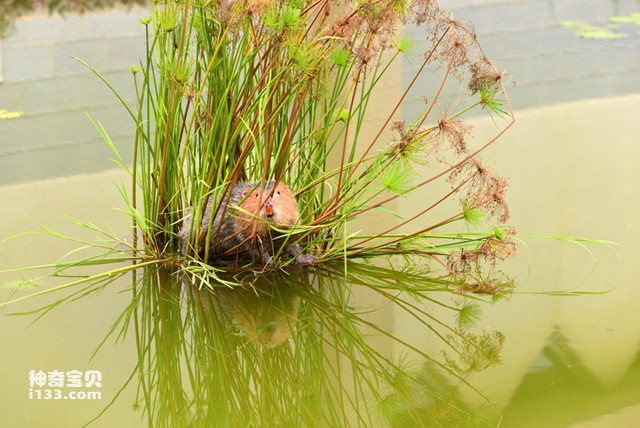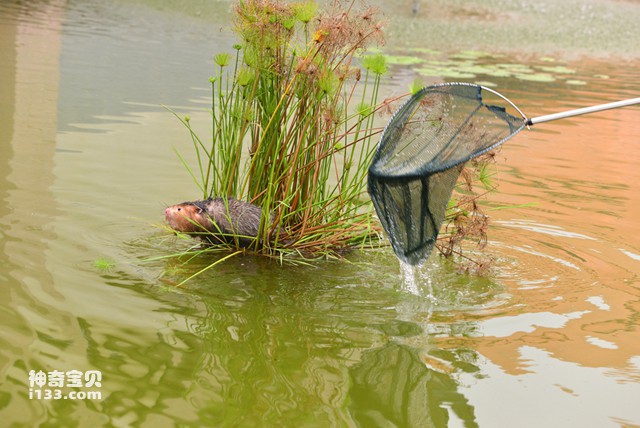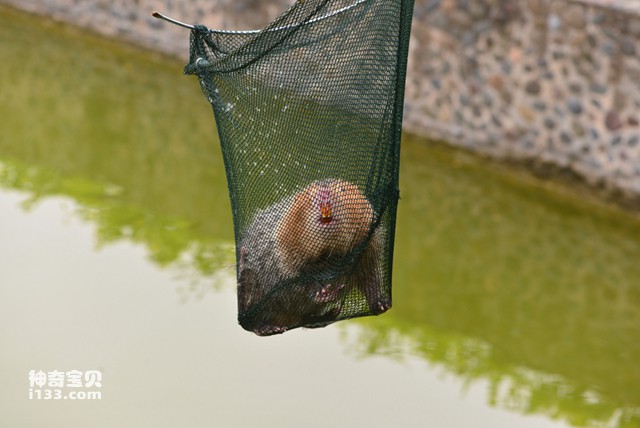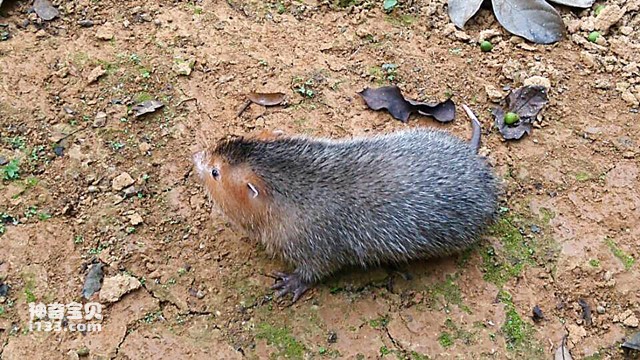In the morning, the science popularization staff of Banna Botanical Garden discovered that the grass in the middle of the pool in front of the museum was shaking. When they approached the edge of the pool, they found a big bamboo rat hiding in the grass, staring around with frightened little eyes. It was all wet and not wet. Shivering all the time. The staff quickly came to the rescue by copying the net, and it took a lot of effort to copy it into the net. The bamboo rat in the net kept making "whoosh" sounds from its mouth, and sometimes it was grinding its teeth "cluck, cluck" It makes a sound or exposes its sharp and thick incisors to scare people. Immediately, the staff released it back into the wild. The fat bamboo rat moved its body and slowly disappeared into the tropical rain forest.

Bamboo rat accidentally fell into the pool
After observation, this is a wild adult female bamboo rat, weighing about 3 kilograms. Judging from the state of the bamboo rat, it may have fallen into the pool last night.

Panicked bamboo rat hiding in water plants
In recent years, science popularization personnel have rescued peacocks, gray-bellied show-eyes, swallows and other birds from this pool.
Bamboo rats, also known as bamboo rats, mango raccoons, pig rats, bamboo raccoons, bamboo root rats, winter-haired rats, etc., belong to the genus Bamboo in the order Mammalia. It is named because it mainly eats bamboo, and wild species are very precious. There are a total of 3 genera and 6 species in the world, and 1 genus and 3 species in China. Bamboo rats inhabit tropical and subtropical forests, shrublands, and bamboo forests in eastern Africa and southern Asia. The number of wild bamboo rats in China is relatively small, only about 3 per square kilometer.

Catching Bamboo Rats

The ferocious bamboo rat was fished out of the pond

Return to nature
animal tags:
We created this article in conjunction with AI technology, then made sure it was fact-checked and edited by a Animals Top editor.